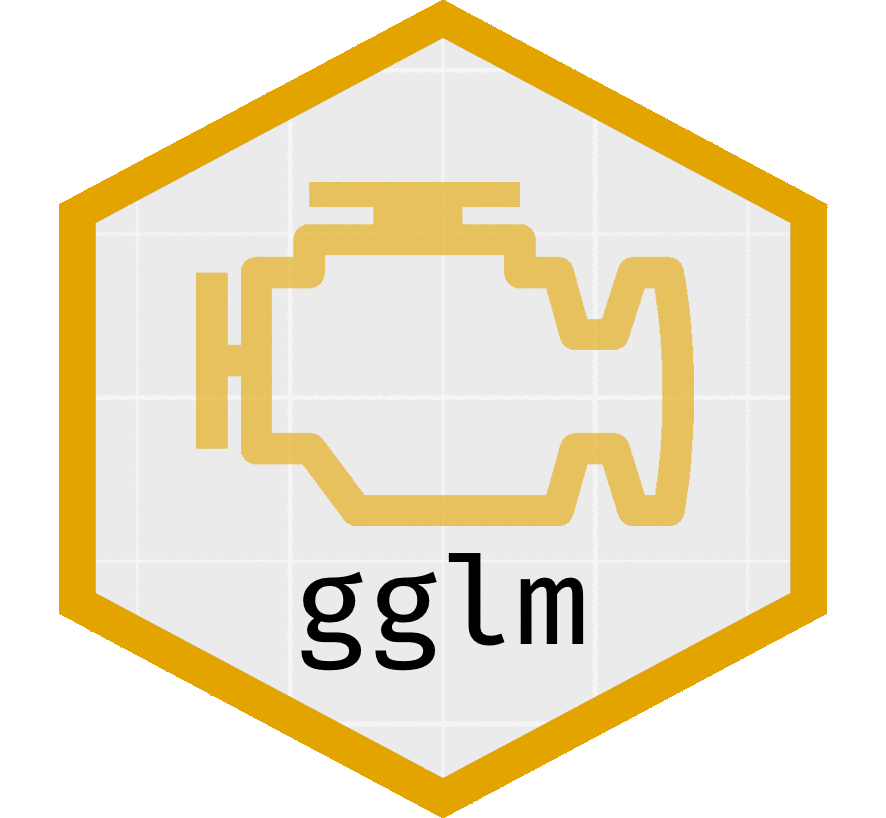The hardware and bandwidth for this mirror is donated by METANET, the Webhosting and Full Service-Cloud Provider.
If you wish to report a bug, or if you are interested in having us mirror your free-software or open-source project, please feel free to contact us at mirror[@]metanet.ch.

gglm, The Grammar of Graphics for Linear Model
Diagnostics, is an R package and official
ggplot2 extension that creates beautiful diagnostic
plots using ggplot2 for a variety of model objects. These
diagnostic plots are easy to use and adhere to the Grammar of Graphics.
The purpose of this package is to provide a sensible alternative to
using the base-R plot() function to produce diagnostic
plots for model objects. Currently, gglm supports all model
objects that are supported by broom::augment(),
broom.mixed::augment(), or ggplot2::fortify().
For example, objects that are outputted from stats::lm(),
lme4::lmer(), brms::brm(), and many other
common modeling functions will work with gglm. The function
gglm::list_model_classes() provides a full list of model
classes supported by gglm.
gglm can be installed from CRAN:
install.packages("gglm")Or, the developmental version of gglm can be installed
from GitHub:
devtools::install_github("graysonwhite/gglm")gglm has two main types of functions. First, the
gglm() function is used for quickly creating the four main
diagnostic plots, and behaves similarly to how plot() works
on an lm type object. Second, the stat_*()
functions are used to produce diagnostic plots by creating
ggplot2 layers. These layers allow for plotting of
particular model diagnostic plots within the ggplot2
framework.
gglm()Consider a simple linear model used to predict miles per gallon with
weight. We can fit this model with lm(), and then diagnose
it easily by using gglm().
library(gglm) # Load gglm
model <- lm(mpg ~ wt, data = mtcars) # Fit the simple linear model
gglm(model) # Plot the four main diagnostic plots
Now, one may be interested in a more complicated model, such as a
mixed model with a varying intercept on cyl, fit with the
lme4 package. Luckily, gglm accommodates a
variety of models and modeling packages, so the diagnostic plots for the
mixed model can be created in the same way as they were for the simple
linear model.
library(lme4) # Load lme4 to fit the mixed model
mixed_model <- lmer(mpg ~ wt + (1 | cyl), data = mtcars) # Fit the mixed model
gglm(mixed_model) # Plot the four main diagnostic plots.
stat_*()
functionsgglm also provides functionality to stay within the
Grammar of Graphics by providing functions that can be used as
ggplot2 layers. An example of one of these functions is the
stat_fitted_resid() function. With this function, we can
take a closer look at just the fitted vs. residual plot from the mixed
model fit in Example 1.
ggplot(data = mixed_model) +
stat_fitted_resid()
After taking a closer look, we may want to clean up the look of the
plot for a presentation or a project. This can be done by adding other
layers from ggplot2 to the plot. Note that any
ggplot2 layers can be added on to any of the
stat_*() functions provided by gglm.
ggplot(data = mixed_model) +
stat_fitted_resid(alpha = 1) +
theme_bw() + # add a clean theme
labs(title = "Residual vs fitted values for the mixed model") + # change the title
theme(plot.title = element_text(hjust = 0.5)) # center the title
Wow! What a beautiful and production-ready diagnostic plot!
gglm() plots the four default diagnostic plots when
supplied a model object (this is similar to plot.lm() in
the case of an object generated by lm()). Note that can
gglm() take many types of model object classes as its
input, and possible model object classes can be seen with
list_model_classes()
stat_normal_qq(), stat_fitted_resid(),
stat_resid_hist(), stat_scale_location(),
stat_cooks_leverage(), stat_cooks_obs(), and
stat_resid_leverage() all are ggplot2 layers
used to create individual diagnostic plots. To use these, follow Example
2.
list_model_classes() lists the model classes compatible
with gglm.
These binaries (installable software) and packages are in development.
They may not be fully stable and should be used with caution. We make no claims about them.